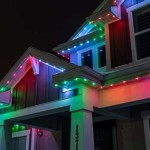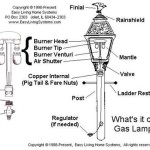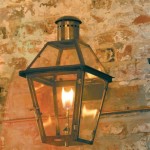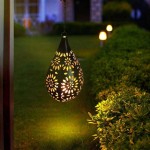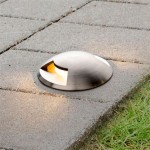Outdoor Lighting with Photo Sensor: A Comprehensive Guide
Outdoor lighting with photo sensors has become increasingly popular, offering enhanced convenience, energy efficiency, and improved security for homes and businesses alike. By incorporating photo sensors into your lighting system, you can automate the operation of your lights, ensuring they turn on automatically as darkness falls and turn off when daylight returns.
In this comprehensive guide, we will delve into the essential aspects of outdoor lighting with photo sensors, exploring their benefits, types, and installation considerations. We will also provide valuable tips on choosing the right photo sensor for your specific needs and troubleshooting common issues.
Benefits of Outdoor Lighting with Photo Sensors
Outdoor lighting with photo sensors offers numerous benefits that make them a worthwhile investment:
- Convenience: Photo sensors eliminate the need to manually turn on and off your outdoor lights, providing ultimate convenience and peace of mind.
- Energy Efficiency: By automatically turning off lights during daylight hours, photo sensors significantly reduce energy consumption, resulting in lower utility bills and a reduced environmental footprint.
- Improved Security: Well-lit outdoor areas deter burglars and other intruders, and photo sensors ensure that your lights are illuminated when needed most.
- Increased Curb Appeal: Properly placed outdoor lights with photo sensors enhance the aesthetics of your home or business, creating a welcoming and attractive ambiance.
Types of Photo Sensors
Photo sensors come in various types, each with its own unique characteristics:
- Dusk-to-Dawn Photo Sensors: The most common type, dusk-to-dawn photo sensors activate lights at dusk and turn them off at dawn.
- Adjustable Photo Sensors: These sensors allow you to customize the light levels at which they turn on and off.
- Motion-Activated Photo Sensors: Combining motion detection with photo sensing, these sensors turn on lights only when movement is detected, providing additional security.
- Astronomical Photo Sensors: Using astronomical data, these sensors calculate the exact time of sunrise and sunset, providing highly accurate light control.
Installation Considerations
Proper installation is crucial for the optimal performance of outdoor lighting with photo sensors:
- Sensor Placement: Choose a location that receives ample sunlight exposure, ensuring the sensor can accurately detect changes in light levels.
- Wiring and Load: Ensure the electrical wiring is appropriately sized to handle the load of the lights you intend to connect to the photo sensor.
- Environmental Factors: Consider the environmental conditions in your area, such as extreme temperatures or moisture, and choose a photo sensor that is rated to withstand these conditions.
Choosing the Right Photo Sensor
When selecting a photo sensor for your outdoor lighting, consider the following factors:
- Type of light fixture: Determine the type of light fixture you will be using, as some photo sensors are designed for specific types.
- Light levels: Consider the desired light levels for your outdoor area and choose a photo sensor with adjustable settings if necessary.
- Budget: Photo sensors vary in price, so determine your budget and compare the cost of different models.
Troubleshooting Common Issues
If you experience any issues with your outdoor lighting with photo sensors, try these troubleshooting tips:
- Check the wiring: Ensure that all electrical connections are secure and free from damage.
- Reset the photo sensor: Some photo sensors have a reset button or switch. Try resetting the sensor to factory settings.
- Replace the photo sensor: If the issue persists, consider replacing the photo sensor, especially if it is old or damaged.
Conclusion
Outdoor lighting with photo sensors offers a host of benefits, including convenience, energy efficiency, improved security, and increased curb appeal. By understanding the different types of photo sensors, installation considerations, and troubleshooting issues, you can choose and implement the best lighting solution for your specific needs. Whether you want to automate your outdoor lighting, enhance security, or simply create a more inviting ambiance, incorporating photo sensors into your lighting system is a worthwhile investment.

Outdoor Lighting Led Motion Sensor Wall Light Modern Sconce Ip65 Waterproof Square Induction Radar For Patio Balcony Garage Work Wa Fruugo Tr

Litecraft Holme Black 2 Lamp Outdoor Wall Light With Photocell Sensor Diy At B Q

Auraglow Pir Motion Sensor Up Down Outdoor Wall Security Light Warminster Stainless Steel Led Lighting

Sambesi Pir Sensor Outdoor Wall Light

Auraglow Pir Motion Sensor Stainless Steel Up Down Outdoor Wall Security Light Warminster Black Led Lighting

Modern Stainless Steel Outdoor Light With Pir Sensor 6211

Edit Optic Outdoor Wall Light With Pir Sensor Black Lighting Direct

How To Add A Light Sensor Outdoor Lanterns The Navage Patch

Auraglow Dusk Till Dawn Daylight Pir Motion Detection Sensor Outdoor Wall Light Wharton Dorton Silver Led Lighting

Outdoor Lamp Anthracite With Motion Sensor Incl Led Uma Lampandlight
Related Posts

